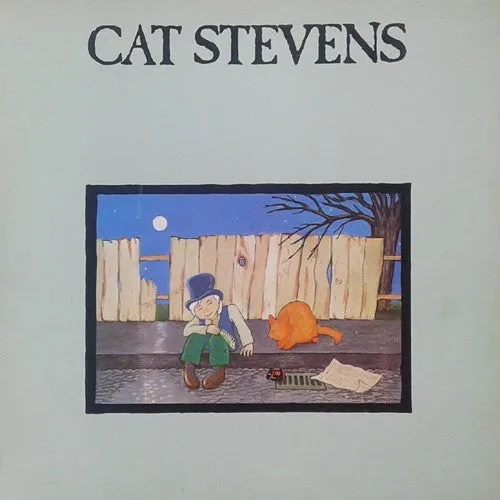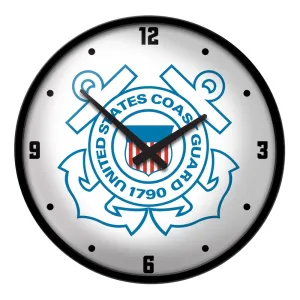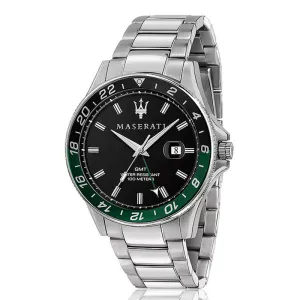*NOTE: This record was not noisy enough to rate our M-- to EX grade, but it's not quite up to our standards for Mint Minus Minus either. If you're looking for quiet vinyl, this is probably not the best copy for you.
In 1971 Cat Stevens released what we consider to be one of the ten best sounding rock and pop albums in the history of recorded media: Teaser & The Firecat.
This vintage Island Pink Rim pressing has the kind of Tubey Magical Midrange that modern records can barely BEGIN to reproduce. Folks, that sound is gone and it sure isn't showing signs of coming back. If you love hearing INTO a recording, actually being able to "see" the performers, and feeling as if you are sitting in the studio with the band, this is the record for you. It's what vintage all analog recordings are known for -- this sound.
If you exclusively play modern repressings of vintage recordings, I can say without fear of contradiction that you have never heard this kind of sound on vinyl. Old records have it -- not often, and certainly not always -- but maybe one out of a hundred new records do, and those are some pretty long odds.
What The Best Sides Of Teaser and The Firecat Have To Offer Is Not Hard To Hear
- The biggest, most immediate staging in the largest acoustic space
- The most Tubey Magic, without which you have almost nothing. CDs give you clean and clear. Only the best vintage vinyl pressings offer the kind of Tubey Magic that was on the tapes in
- Tight, note-like, rich, full-bodied bass, with the correct amount of weight down low
- Natural tonality in the midrange -- with all the instruments having the correct timbre
- Transparency and resolution, critical to hearing into the three-dimensional studio space
No doubt there's more but we hope that should do for now. Playing the record is the only way to hear all of the qualities we discuss above, and playing the best pressings against a pile of other copies under rigorously controlled conditions is the only way to find a pressing that sounds as good as this one does.
A Work of Genius, I Tell You
Before I get further into the sound of this record, let me preface my remarks by saying this is a work of genius. Cat Stevens made two records that belong in the Pantheon of greatest popular recordings of all time. In the world of folky pop, Teaser and the Firecat and Tea for the Tillerman have few peers. There may be other recordings that are as good but there are no other recordings that are better.
When you hear "The Wind," "Changes IV," or "If I Laugh" on this copy, you will be convinced, as I am, that this is one of the greatest popular recordings in the history of the world. I don't know of any other album that has more life and musical energy than this one.
reproduction is superb on the better copies of this recording. Simply phenomenal amounts of Tubey Magic can be heard on every strum, along with richness, body, and harmonic coherency that have all but disappeared from modern recordings (and especially from modern remasterings).
Congamania
During the shootout for this record a while back we made a very important discovery; a seemingly obvious one but one that nevertheless had eluded us for the past twenty-plus years (so how obvious could it have been?). It became clear for the first time what accounts for the wide disparity in energy and drive from one copy to the next. We can sum it up for you in one word, and that word is conga.
The congas are what drive the high-energy songs, songs like "Tuesday's Dead" and "Changes IV." Here is how we stumbled upon their critically important contribution.
We were listening to one of the better copies. The first track on side one, "The Wind," was especially gorgeous; Cat and his acoustic guitar were right there in the room with us. The transparency, tonal neutrality, presence and all the rest were just superb. Then came time to move to the other test track on side one, which is "Changes IV," one of the higher energy songs we like to play.
But the energy we expected to hear was nowhere to be found. The powerful rhythmic drive of the better copies of the album just wasn't happening. The more we listened the more it became clear that the congas were not doing what they normally do. The midbass to lower midrange area of the LP lacked energy, weight, and power, and this prevented the song from coming to life the way the truly Hot Stampers can and do.
What We're Listening For On Teaser and The Firecat
- Energy for starters. What could be more important than the life of the music?
- Then: presence and immediacy. The vocals aren't "back there" somewhere, lost in the mix. They're front and center where any recording engineer worth his salt would put them.
- The Big Sound comes next -- wall to wall, lots of depth, huge space, three-dimensionality, all that sort of thing.
- Then transient information -- fast, clear, sharp attacks, not the smear and thickness so common to these LPs.
- Tight punchy bass -- which ties in with good transient information, also the issue of frequency extension further down.
- Next: transparency -- the quality that allows you to hear deep into the soundfield, showing you the space and air around all the instruments.
- Extend the top and bottom and voila, you have The Real Thing -- an honest to goodness Hot Stamper.
Not Even the Same Recording
One of our good customers sent us these comments about the Hot Stamper copy we sold him a while back:
Wow! You definitely are right when you claim this to be one of the best pop recordings extant. When the drums in Changes IV come in I was amazed at how much they sound like a live drum kit. Cat's voice is eerily present, guitars have both pluck and body, bass drums have that sock-in-the-gut impact, and the soundstage is huge and transparent.
Like a lot of other hot stampers, it almost seems as if it is another recording altogether, so much more alive and dynamic. At the end of Morning Has Broken you can hear the pianist step off the piano foot pedal--never heard this before outside of the piano in our living room.
So if you're looking for an amazing demo quality recording, you've come to the right place. If you want a timeless Classic Rock recording, it's here too. They just don't make them like this anymore. Those of you waiting for audiophile vinyl reissues with the kind of magic found on these originals will be in their graves long before it ever comes to pass.
Vinyl Condition
Mint Minus Minus is about as quiet as any vintage pressing will play, and since only the right vintage pressings have any hope of sounding good on this album, that will most often be the playing condition of the copies we sell. (The copies that are even a bit noisier get listed on the site are seriously reduced prices or traded back in to the local record stores we shop at.)
Those of you looking for quiet vinyl will have to settle for the sound of other pressings and Heavy Vinyl reissues, purchased elsewhere of course as we have no interest in selling records that don't have the vintage analog magic of these wonderful recordings.
If you want to make the trade-off between bad sound and quiet surfaces with whatever Heavy Vinyl pressing might be available, well, that's certainly your prerogative, but we can't imagine losing what's good about this music -- the size, the energy, the presence, the clarity, the weight -- just to hear it with less background noise.
Track Commentary
The Tracklist tab above will take you to a select song breakdown for each side, with plenty of What to Listen For advice.
Other records with track breakdowns can be found .
A Must Own Pop Record
This Demo Disc quality recording -- a permanent member of our -- should be part of any serious audiophile popular music collection.
Others that belong in that category can be found .












